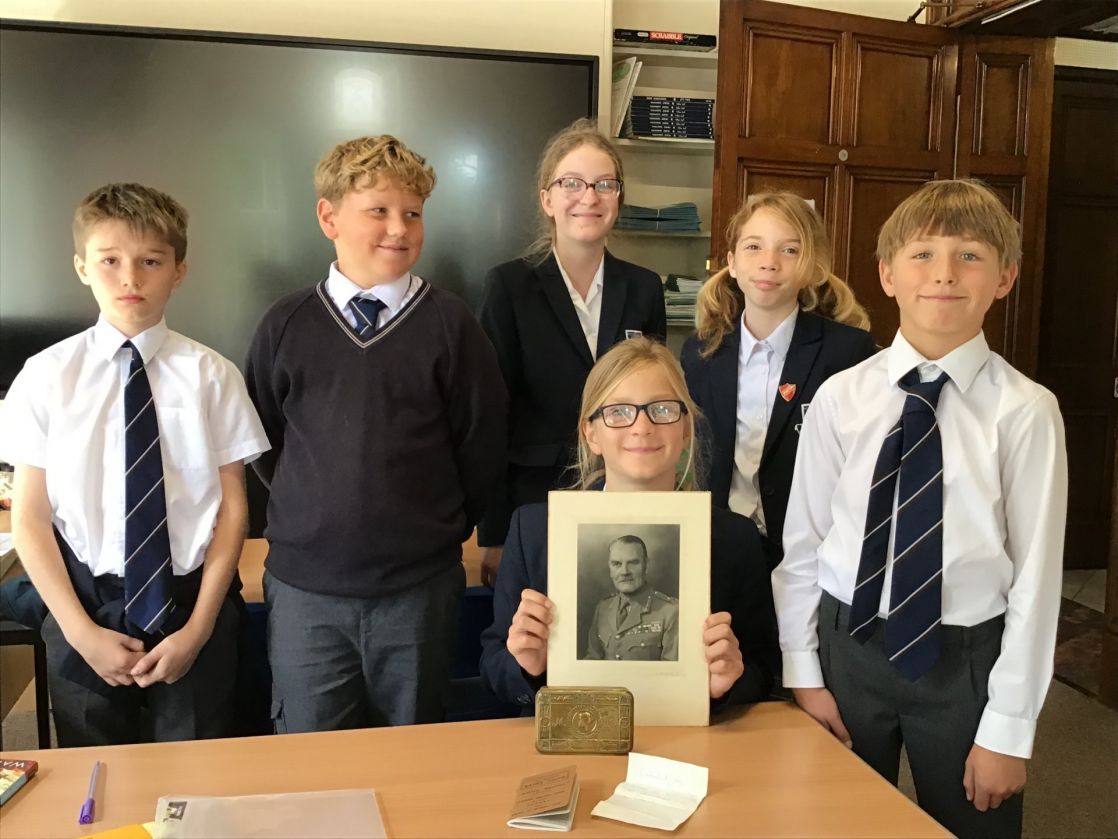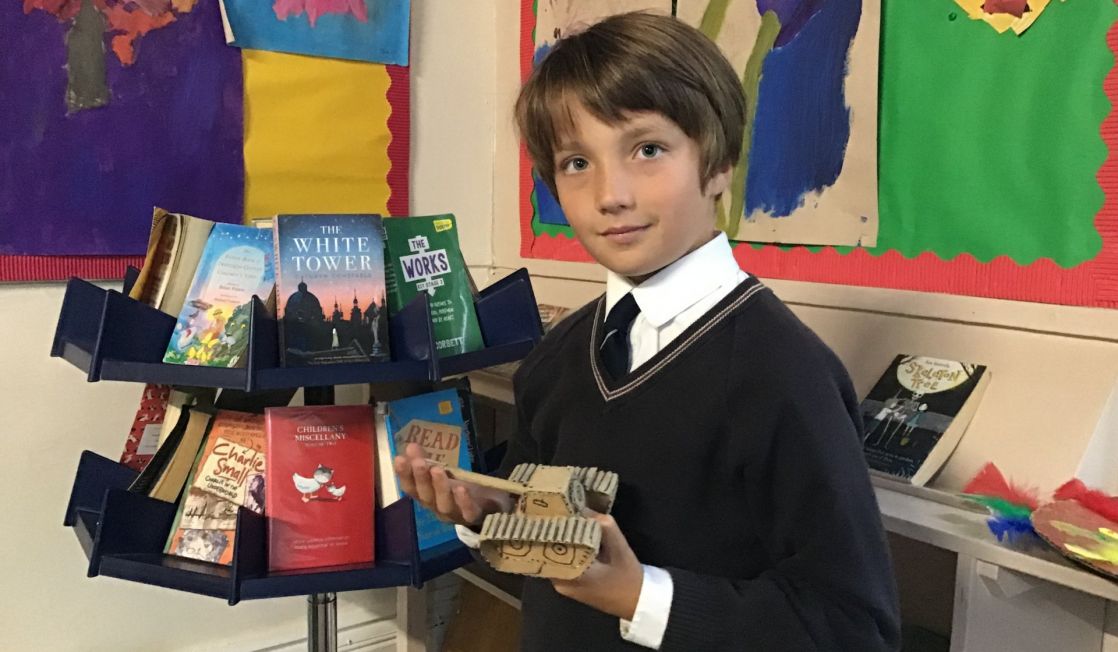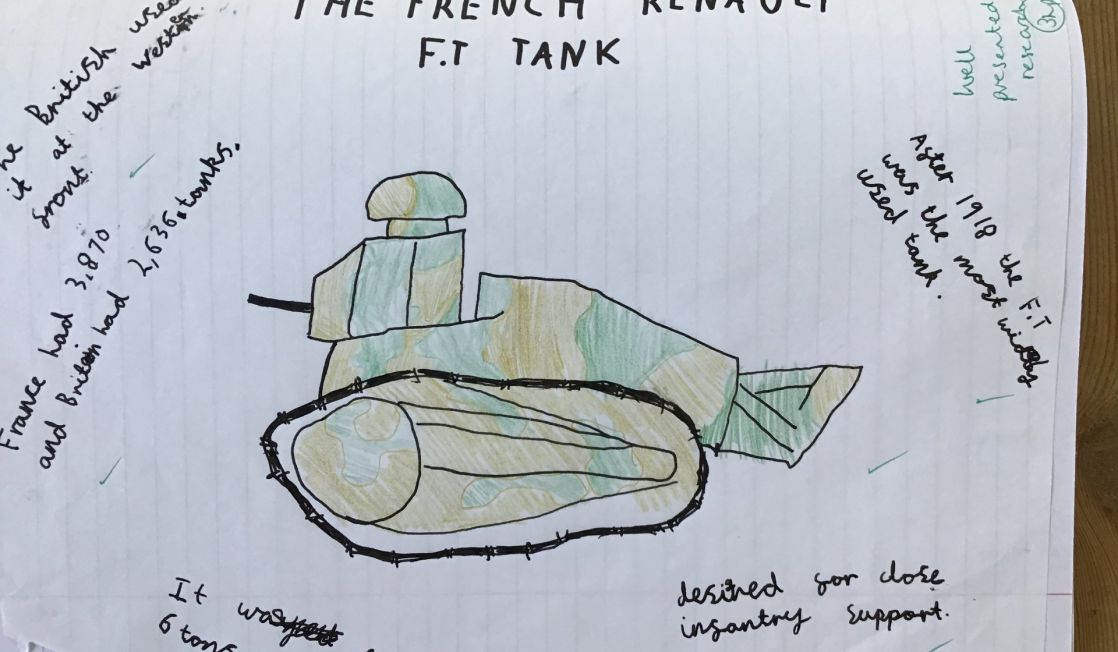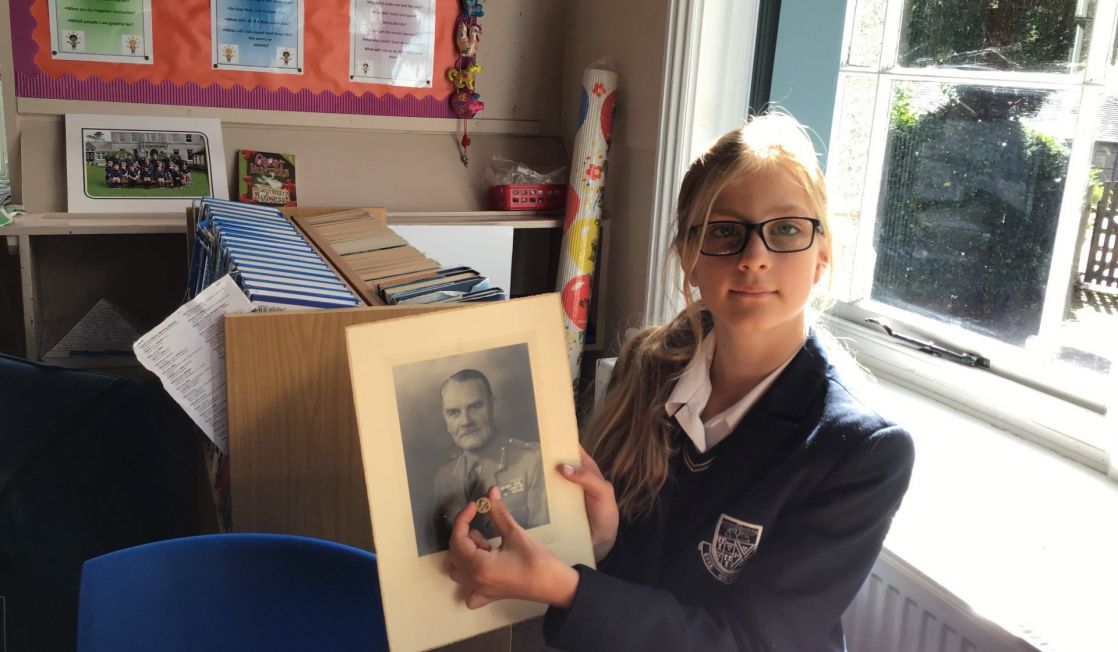Back
- Nursery
- Prep
- Senior
- Sixth
- Home
- Contact Us
- Admissions
- Boarding

‘War Horse’ by Morpurgo stimulates curiosity about the past
Morpurgo’s powerful narrative, in which he tells the story of an extraordinary friendship between Albert and his beloved horse, Joey, has sparked the curiosity of children in Year 6.
The fact that it’s narrated from an unusual perspective – that of a horse – has allowed our children to make a close connection with the plot.
The story unfolds in Devon, before Joey (the horse) is sold to the Cavalry and is shipped to France. As the reader, we witness and endure the horror of the battlefields of France from a horse’s point of view.
Some of the children had watched the film, others had seen the National Theatre’s magnificent production of ‘War Horse.’ Prior to this, none of them had previously considered the role of horses in WW1.
Recently, the children have worked independently to research different aspects about WW1.
They have been curious about everything.
Last week, in our English set, we watched a moving film from the National Theatre’s ‘War Horse’ website which explained the role of horses in the war. Archie, who had shared it with us, explained carefully about the origins of WW1, the timeline, the countries involved, and he showed us the exact location of the battlefields of France. He also answered questions with confidence about his research.
We also listened to Daisy, who explained the role of her great-great-Grandfather, Algernon Cottam, who was a Major General in the war. She also had a curious metal box, inside which was the identical silver button to those he was wearing in his black and white photograph. Daisy explained that he had received this special reward for carrying out his duties during either Christmas 1914 or 1915.
We heard from Josephine, who told us about her family history. It was a story of epic bravery and valour from the battlefields of France. She told us about a family ancestor who had been shot in the arm and was advised that an amputation would be necessary. Luckily, they managed to save his arm and he eventually made a full recovery.
Several children researched tanks in WW1. Henry decided to go a step further – creating a cardboard working model of the tank, complete with firing action. We enjoyed watching his video, in which he lit a piece of wire to start the fuse, and the effect of this on his Lego soldier. It was great to see that he had got the whole family involved!
Sally Luxton



Truro School is part of the Methodist Independent Schools Trust (MIST)
MIST Registered Office: 66 Lincoln’s Inn Fields, London WC2A 3LH
Charity No. 1142794
Company No. 7649422